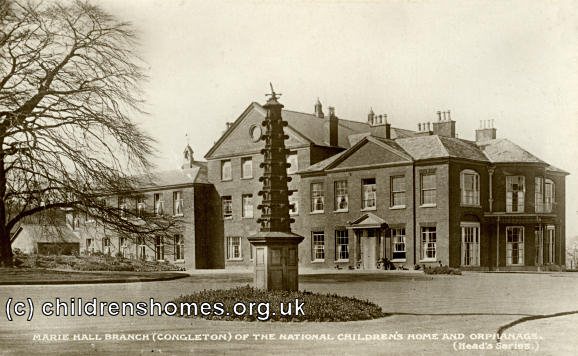Approved Schools
In 1912, there were in Great Britain a total of 44 Reformatories and 148 Industrial Schools, with a combined population of 25,752 inmates. By 1926, there remained just 28 Reformatories and 56 Industrial Schools, with a population of 6,871. The dramatic decrease could be explained by a number of factors: an increasing use of probation, introduced in 1907; the increasing reluctance of local authorities to pay the cost of maintaining children placed there; a general decline in juvenile crime; improvements in the education system; and a swing in attitudes against consigning young people to institutions. The bad publicity created by the 'Akbar Scandal' in 1910 also made magistrates increasingly reluctant to use the establishments. In 1925, the Home Office set up a Departmental Committee to examine the future of Reformatories and Industrial Schools.
The Committee's report, issued in 1927, recommended that the two existing types of institution be abolished and replaced by a single establishment to be known as an Approved School. The new Approved Schools were to cater for "all classes of neglected and delinquent children". The term "delinquent" was specified as any young person under the age of 17 who was proved to have committed any offence. The basis for a child being "neglected" broadly continued the principles embodied in the 1908 Children Act and included: children found begging, wandering or destitute; children whose parents were unfit to care for them because of criminal or drunken habits; children associating or living with prostitutes, and so on. The report also suggested the addition of children "falling into bad associations, or [who] are exposed to moral danger or are beyond control", and those against whom specified offences, such as cruelty or sexual offences, were committed, who were living in homes where such offences had been committed against other children.
The Committee's recommendations formed the basis of the 1932 Children and Young Persons Act (slightly revised as part of the 1933 Children and Young Persons Act) in England and Wales. The Act provided various courses of action for what were now described as "juveniles in need of care or protection" and "juvenile offenders", including being sent to an Approved School, put on probation, or put into the care of "any fit person". Courts could, in addition, sentence male juvenile offenders to be "privately whipped with not more than six strokes of a birch rod by a constable". The Act also introduced Remand Homes for accommodating youths temporarily held in custody, for example to await a court hearing.
A children could be admitted to an Approved School if he or she:
- Was found guilty of an offence which, in the case of an adult, would be punishable by a prison sentence.
- Was found to be in need of care, protection or control.
- Was deemed to be 'refractory' while in the care of a Local Authority Children's Department.
- Was brought back to Court because of behaviour while on probation.
- Had run away from the care of a Local Authority or a 'fit person'.
- Had come before the Court for truancy.
Approved Schools were divided into categories based on the age-range of the children they dealt with. The Approved Schools for boys were divided into Senior (aged 15 to 17), Intermediate (13 to 15), and Junior (10 to 13). Initially, the Approved Schools for Girls were Senior (15 to 17 years) and Junior (under 15), although an Intermediate category was introduced in the 1950s for those aged 14 to 16. Many former Reformatory and Industrial Schools converted to become Approved Schools and so the great majority of the institutions continued to be operated by voluntary bodies. When the new system was introduced in 1933-4, there were initially 86 establishments, mostly former Industrial Schools. By 1938, there were 104 Approved Schools housing a total of 7,268 boys and 1,496 girls. Most of the new establishments were for girls.

The NCH's Marie Hall Home, which became an Approved School in c.1935. © Peter Higginbotham
A further development came in 1943 when Aycliffe School became the first Classifying School. Previously, magistrates had named a specific Approved School when committing a child to confinement. The role of the Classifying School was to assess the 'character, mental attainments and physical abilities' of new entrants into the Approved School system and decide which institution would then best meet their needs. After the Second World War, four more Classifying Schools were established for boys and two for girls.
The system of Approved Schools continued in England and Wales until 1973 when they were replaced by Community Homes with Education (CHEs).
Scotland's Approved School system was essentially the same as that in England and wales. The 1968 Social Work (Scotland) Act led to the existing Approved Schools in Scotland bing redesignated as 'List D' Schools. In Northern Ireland, however, it was only following the Children and Yong Persons (Northern Ireland) Act of 1950, that the separate Reformatory and Industrial School systems were replaced by Approved Schools, also sometimes known as Training Homes.
Bibliography
- Higginbotham, Peter Children's Homes: A History of Institutional Care for Britain's Young (2017, Pen & Sword)
- Hyland,Jim Yesterday's Answers: Yesterday's Answers: Development and Decline of Schools for Young Offenders (1993, Whiting and Birch)
- Millham, S, Bullock, R, and Cherrett, P After Grace — Teeth: a comparative study of the residential experience of boys in Approved Schools (1975, Chaucer Publishing)
Links
- None identified at present.
Except where indicated, this page () © Peter Higginbotham. Contents may not be reproduced without permission.


